In the United States, the National Register of Historic Places classifies its listings by various types of architecture. Listed properties often are given one or more of 40 standard architectural style classifications that appear in the National Register Information System (NRIS) database. Other properties are given a custom architectural description with "vernacular" or other qualifiers, and others have no style classification. Many National Register-listed properties do not fit into the several categories listed here, or they fit into more specialized subcategories.
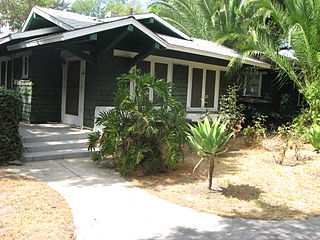
Bowen Court is a bungalow court located at 539 E. Villa St. in Pasadena, Los Angeles County, California. The court includes 23 bungalows arranged in an "L" shape and is one of the largest bungalow courts in southern California. Built from 1910 to 1912, Bowen Court is the oldest bungalow court in Pasadena. The court was designed by Arthur and Alfred Heineman, who planned the court around a Craftsman style courtyard.

Haskett Court is a bungalow court located at 824–834 E. California Boulevard in Pasadena, California. The court includes five buildings which form a "U" shape around a central walkway; the buildings contain a combined six residential units. Built in 1926, the court was designed by Pasadena architect Charles Ruhe and built by W. B. Haskett, who also lived in one of the homes. The houses in the court were designed to resemble English cottages, and their architecture is similar to the Tudor Revival style. As bungalow courts lost popularity in the 1930s, Haskett Court is one of the later bungalow courts built in Pasadena.

Don Carlos Court is a bungalow court located at 374–386 S. Marengo Ave. in Pasadena, California. The court contains seven homes built around a central courtyard and walkway. The homes were designed in the Spanish Colonial Revival style and were all built with stucco facades and tiled gable roofs. The courtyard includes a decorative birdbath and planter. Contractor Clarence Hudson Burrell built the court in 1927.
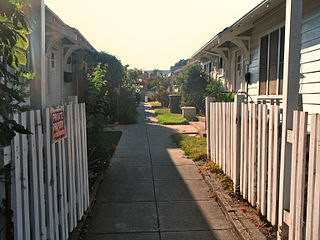
Colonial Court is a bungalow court located at 291–301 N. Garfield Ave. in Pasadena, California. The court consists of six houses arranged around a narrow courtyard. The houses are designed in the Colonial Revival style and feature clapboard siding and jerkinhead roofs. Built in 1916, the homes were designed by architect Cyril Bennett.

Euclid Court is a bungalow court located at 545 S. Euclid Ave. in Pasadena, California. The court consists of eight residential units in five buildings surrounding a central courtyard. The court was built in 1921; however, one house in the court was built in 1888 and later incorporated into the court's design. The homes were designed by the Postle Company in the Tudor Revival style; their designs feature half-timbered facades, porches with brick walls, and stucco chimneys. Both gable and jerkinhead roofs were used to top the houses.
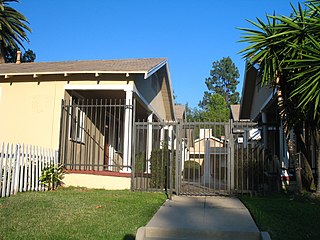
Cottage Court is a bungalow court located at 642–654 S. Marengo Ave. in Pasadena, California. The court consists of seven houses surrounding a narrow courtyard. The stucco homes were built in 1923 and designed in the Colonial Revival style. The designs feature gable roofs with wide eaves and recessed porches with supporting columns. The courtyard includes a walkway and two light poles.
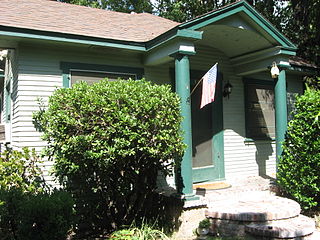
Cypress Court is a bungalow court located at 623–641 N. Madison Ave. in Pasadena, California. The court consists of eight houses surrounding two central walkways. The homes are designed in the Colonial Revival style and feature gable roofs and gabled porches supported by columns. Contractor Arthur G. Gehrig built the court in 1928.

The Court at 497-503½ North Madison Avenue is a bungalow court located at 497-503½ N. Madison Ave. in Pasadena, California.

The Court at 744-756½ S. Marengo Ave. is a bungalow court located at 744-756½ S. Marengo Ave. in Pasadena, California. The court includes six buildings containing fourteen residential units centered on a driveway. Two of the buildings are two stories tall, while the remainder are one story. Contractor D. J. Ringle built the court in 1931. The homes were designed in the Art Deco style and feature fluted parapets and engaged piers. The court is one of the few Art Deco residential properties in Pasadena and has thus been called "probably the most unusual" bungalow court in the city.

The Court at 732-744 Santa Barbara St. is a bungalow court located at 732-744 Santa Barbara St. in Pasadena, California. The original court includes three buildings containing five residential units surrounding a central courtyard. Contractor D. Hoffman built the court in 1922. The homes in the court were designed in the Spanish Colonial Revival style and feature porches with tile roofs atop columns and broken parapets along their roofs. A sixth building at 738 Santa Barbara was added in 1956; this building is not considered part of the historic court.

Gartz Court is a bungalow court located at 745 N. Pasadena Ave. in Pasadena, California. The court consists of five buildings containing six residential units, which surround an oval rose garden and walkways. Built in 1910, the court, along with Bowen Court, is one of the oldest remaining in Pasadena. The court was commissioned by Kate Crane Gartz, the heir to Crane Plumbing, and was designed by Myron Hunt and Elmer Grey. The homes' designs were influenced by the English Arts and Crafts Movement and feature stone chimneys, wood shingled skirts, and Tudor Revival-style half-timbering. The court was originally located at 270 N. Madison Ave., but was moved to its current location in 1984 to save it from demolition.

Mission Court is a bungalow court located at 567 N. Oakland Ave. in Pasadena, California. The court consists of eight buildings containing fourteen residential units which surround a central courtyard. Built in 1913, the court was designed by architect J. F. Walker. The houses in the court were designed in the Mission Revival style; the court is the oldest Mission Revival bungalow court in Pasadena. The houses' designs feature broken parapets along the roofs and porches with either recessed arch entrances or tiled shed roofs. The courtyard includes two buttressed piers topped by lamps.

Orange Grove Court is a bungalow court located at 745 East Orange Grove Blvd. in Pasadena, California. The court, which was built in 1924, contains twelve single-family houses arranged along a central walkway. The houses were designed in the Mission Revival style and feature arched porches and windows, stucco exteriors, and tile roofs. A double arch is located at the end of the walkway, a variation on the common practice of placing another home at the end of the walkway in a bungalow court. According to its National Register of Historic Places nomination, the court "epitomizes the concept of the Southern California bungalow court" due to its layout and Mission Revival details.
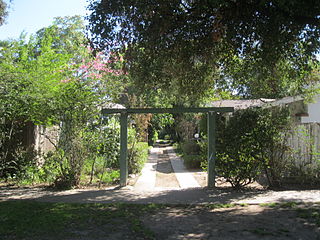
Palmetto Court is a bungalow court located at 100 Palmetto Dr. in Pasadena, California. The court consists of twelve single-family homes arranged along two central pathways with a two-unit building at the end of the paths. A torii-like gate is located at the court's street entrance. Contractor A. C. Parlee built the court in 1915. The homes in the court are designed in the American Craftsman style and feature both shingle and clapboard siding and a variety of roof styles including jerkinhead, gable, and shed.

Sara-Thel Court is a bungalow court located at 618-630 S. Marengo Ave. in Pasadena, California. The court includes seven buildings arranged around a central walkway; six of the buildings are single-family units, while a double unit is located at the end of the walkway. Built in 1921, the court was designed by Jas. Humphreys. The houses were mainly designed in the American Craftsman style and feature gable roofs with shallow slopes and exposed rafters; the moldings on the homes were inspired by the Colonial Revival style.

Mentor Court is a bungalow court located at 937 E. California Blvd. in Pasadena, California. The court is located on a 60 feet (18 m) wide property, which is considered narrow for bungalow courts, and comprises five buildings containing eleven residential units; the buildings include single-unit, duplex, and triplex houses, an unusual combination in a bungalow court. The buildings are designed in the English Cottage Revival style and feature jerkinhead roofs, arched doors with glass paneling, and a stoop at each entrance covered by an eyebrow hood. The Delux Building company built the court in 1923.
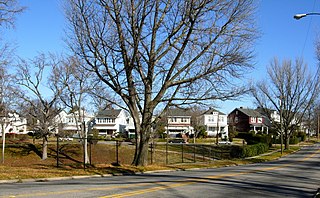
The Battery Court Historic District is a national historic district located at Richmond, Virginia. The district encompasses 549 contributing buildings and 1 contributing site located north of downtown Richmond and west of Barton Heights and Brookland Park. The primarily residential area developed starting in the early-20th century as one of the city's early “streetcar suburbs.” The buildings are in a variety of popular late-19th and early-20th century architectural styles including frame bungalows, American Foursquare, Colonial Revival, Tudor Revival, and Mission Revival. Notable non-residential buildings include the Overbrook Presbyterian Church and Battery Park Christian Church.

Prospect Hill Historic District is a national historic district located at Bloomington, Monroe County, Indiana. The district encompasses 38 contributing buildings and 8 contributing structures in a predominantly residential section of Bloomington. It developed between about 1840 and 1936, and includes notable examples of Queen Anne, Colonial Revival, Tudor Revival, Mission Revival, and Bungalow/American Craftsman style architecture. Located in the district is the separately listed Blair-Dunning House.

Shortridge–Meridian Street Apartments Historic District is a national historic district located at Indianapolis, Indiana. The district encompasses 136 contributing buildings in a predominantly residential section of Indianapolis. It was developed between about 1900 and 1951, and includes representative examples of Colonial Revival, Classical Revival, Late Gothic Revival, Mission Revival, Renaissance Revival, Bungalow / American Craftsman, and Art Deco style architecture. Located in the district is the separately listed Shortridge High School. Other notable buildings include the Vernon Court Apartments (1928), Fronenac Apartments (1951), Biltmore Apartments (1927), Meridian Apartments (1929), New Yorker Apartments (1917), Howland Manor (1929), Powell-Evans House (1911), Harms House (1906), Dorchester Apartments (1921), and Martin Manor Apartments (1916).


























